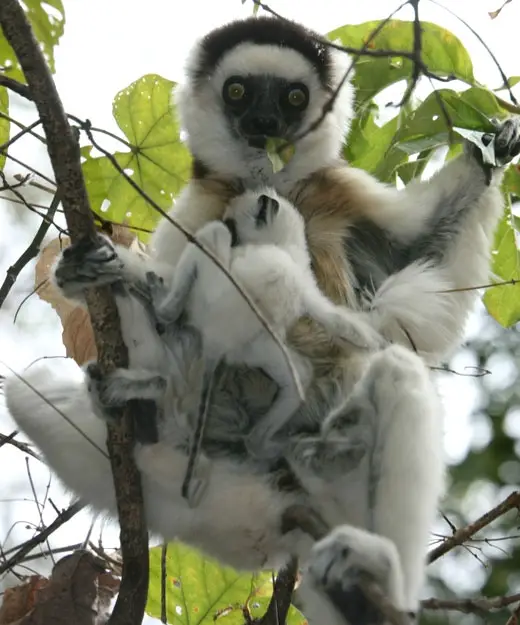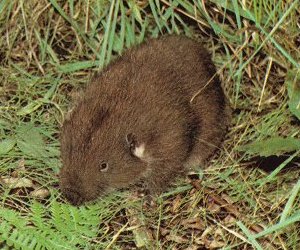Sifaka
The wondrous Sifaka is part of the Lemur family, and like all Lemurs the Sifaka is exclusive to the island of Madagascar. The Sifaka are arboreal which means that the spend the vast majority of their lives up in the trees and like most Lemurs and indeed most mammals, the Sifaka are diurnal which means that they go about their activities in the daytime and sleep at night. If you were to have the pleasure of seeing a Sifaka in the wild you would probably encounter them par-taking in their favorite pastime – sunbathing.
A medium sized idrind (part of the indriidae primate family), the Safika weighs in at around 10lbs on average and are usually anywhere around 22 inches in height.
The Sifaka, although Lemurs, differ from the majority of Lemurs such as the Babakoto for example. The main differences of the Sifaka against most other Lemurs is that their tails are no shorter than their body and also that the Sifaka live in larger groups of Lemurs with anywhere up to 13 Lemurs (including the leader) being tolerated at any one time. Lemurs navigate their home in the trees with extreme skill, able to jump up to ten meters from branch to branch while always maintaining an upright posture. When it comes to traversing the ground Sifakas certainly aren’t as confident but they still manage to get around with relative ease like any other Lemur.

Sifaka
Like many other Lemurs the Sifaka have adapted ways to better groom themselves and have a toilet-claw and a toothcomb for such necessities. Primarialy herbivores the Sifakas eat herbs, leaves and fruit which is perfect for the enviroment in which they reside and although Sifakas are generally peaceful and can tolerate neighbors like the Common Brown Lemur and the Red Bellied Lemurs when it comes to another group of Sifakas they are extremely territorial.
A female Sifaka will gestate for around four or five months before finally giving birth. The young will stick with their mother clinging to their mothers belly until they are too big, they will move around to ride on their mothers backs. After 6 weeks the young become less dependent and from then on can live to around 18 years after reaching full maturity at around 2 – 3 years old.
In the event that a conflict arises between two groups of Sifakas (usually over territory), this will almost always end in the death of male members of one or both groups. A common occurrence with these types of conflicts can result in one group being taken over by the other which will lead to the young of the dominated group being slain as they were not sired by the new alpha male, such is the way in nature – survival of the fittest.


